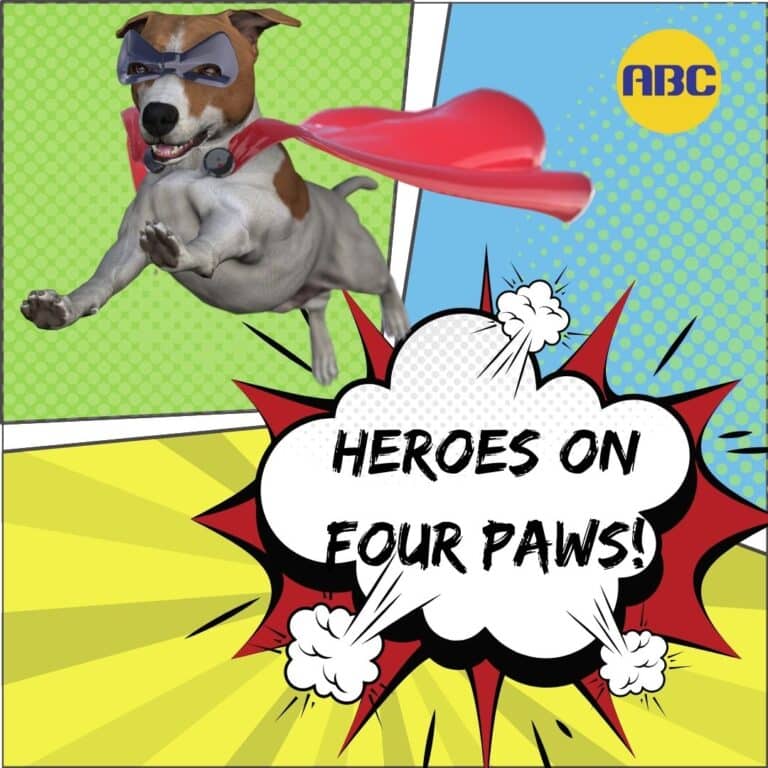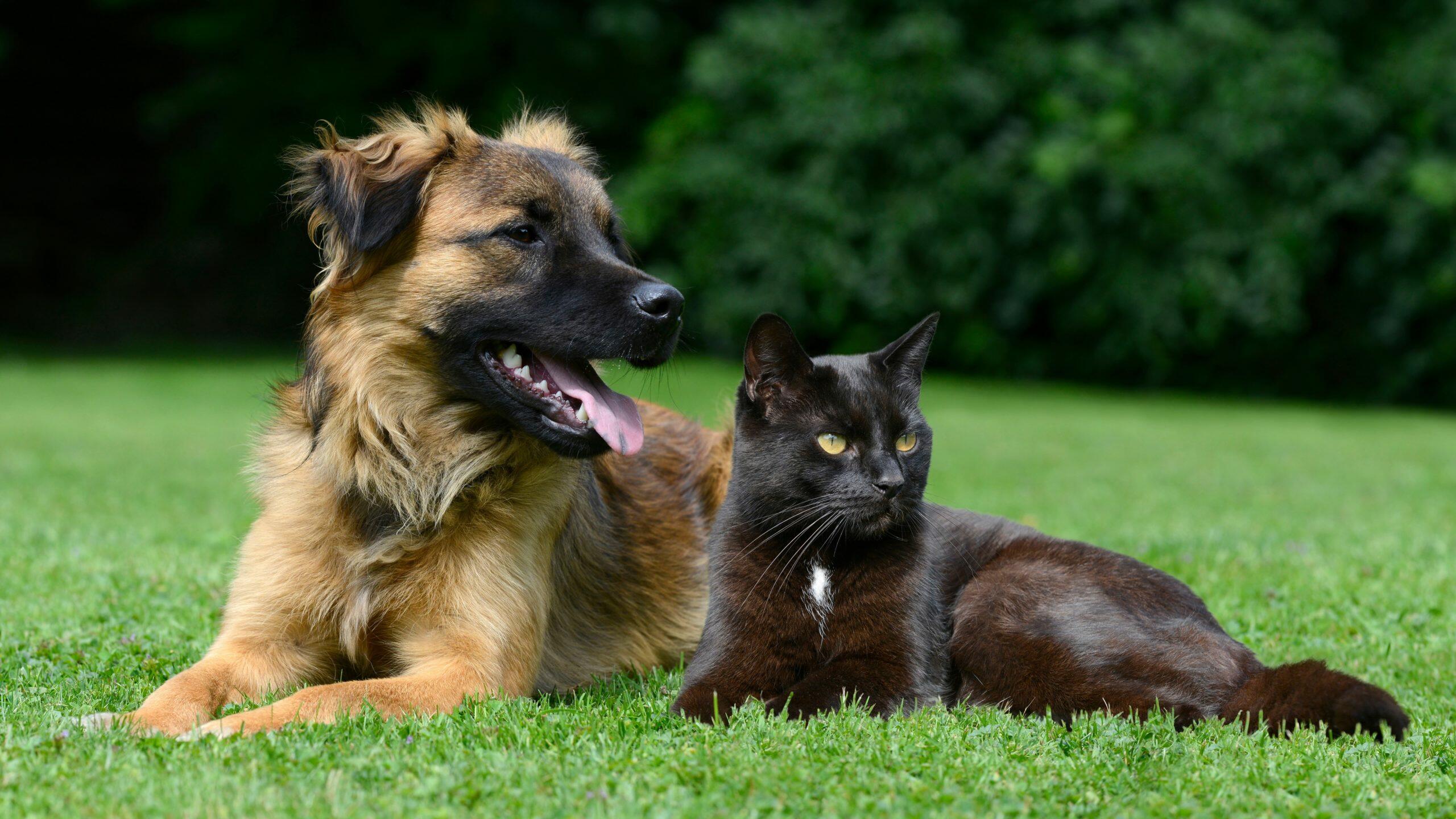Heroes on Four Paws: Dogs Save Lives in War and Peace
Dogs of War
U.S. soldiers have a long history of taking man’s best friend to the battlefront. Many Civil War units had beloved mascots, but dogs had no official role beyond providing companionship.
By World War I many countries had recognized the potential of dogs in combat situations. Though the United States military did not officially have a program to train dogs for service, they were used by many countries as watchdogs, sentries, scouts, and messengers. Terriers were popular for their ability to combat the rats that shared the trenches with the soldiers.
The Red Cross employed assistance or “ambulance dogs” to venture into “no man’s land” – the dangerous zone between the trenches of the Allies and their enemies. They performed such tasks as carrying first aid supplies to wounded men and lying down next to dying soldiers to provide comfort. Some were trained to carry a wounded soldier’s hat to the medics and lead them back to him.
Official U.S. Military Service Dogs
During World War II, there was a civilian-led effort to train dogs for military service. Called Dogs for Defense, the group persuaded pet owners to give them their animals for training as guard dogs.
It did not quite work out as hoped; different levels of training experience and other issues hampered the ambitious effort. However, it piqued the interest of military brass.
In the summer of 1942, the Remount Branch Quartermaster became a procurer and trainer of canines. At first, all breeds were accepted, but it quickly became apparent that some breeds were more suited to the work: German shepherd, Doberman pinscher, Belgian sheepdog, collie, Siberian husky, malamute, and Eskimo dog.
The first dogs were put to work guarding the coastline against saboteurs that might be put ashore by enemy submarines. Eventually, 3,174 dogs would serve the Coast Guard in that capacity.
Before long, tactical, scout, and messenger dogs were being trained. There were bugs to be worked out. For example, during their training in the U.S., dogs were acclimated to gunfire but not the artillery which caused them to panic during battle.
As the kinks were worked out, the abilities of the dogs shone. As scouts, for instance, they could warn their handlers of the enemy’s presence at a range of 1000 yards.
Messenger dogs could deliver messages short distances during combat faster than their human counterparts, and they made smaller targets.
After the war, the army made a massive effort to ensure the vast majority of dogs returned to the United States and were re-trained to lead successful civilian lives.
During the Korean and Vietnam conflicts, dogs again accompanied the troops. More than 4,000 dogs went to Vietnam. They scouted, tracked, performed sentry duty, and detected mines, tunnels, and booby-trap. By conservative estimate, these four-legged heroes were responsible for saving 10,000 American lives.
The dogs were highly proficient at sniffing out trouble and avoiding ambushes in the jungle where so much vegetation limited human sight. So effective and despised by the enemy were they that the Viet Cong put a $20,000 bounty on them.
Tragically, only 204 dogs made it home. The rest were either turned over to the South Vietnamese military or euthanized, despite the pleas of many of their distraught human handlers.
In 2000, the Robby Law was enacted preventing such an atrocity from ever being repeated and allowing citizens to adopt retired military service dogs.
Dogs in Modern Warfare
More recent wars have taken canine soldiers to the arid climate of the Middle East where they have proved invaluable in drug and explosive detection and sentry duty. Their life-saving capabilities far exceed their $150,000-plus price tag.
Lucca, a German Shepherd-Belgian Malinois mix, served as a Marine Corps explosives detection dog for six years. In the course of the 400 patrols she led, no soldier was ever injured, and she was able to ID around 40 explosive devices. She received an injury that resulted in the loss of a front leg in 2012.
Dogs like Lucca save the lives of countless American soldiers, but for many of those soldiers, their struggles follow them home.
Service Dogs Are Homefront Heroes
On the home front, as on the battlefield, specially trained canines can help their humans…
Many veterans, suffering from injuries and amputations, rely on service dogs to perform tasks to allow them to live independently and navigate the world. They can be trained to perform a mind-boggling array of tasks, such as opening doors, pulling a wheelchair or supplying stability, and retrieving objects.
Many veterans, wounded or not, carry the trauma of war home with them in the form of PTSD, and dogs are uniquely capable of assisting veterans living with this invisible enemy. They can do such things as gently wake a veteran for whom a loud alarm is a trigger, or they can enter a room first and turn on the lights for one who cannot face going into the dark.
They provide hope, love, support, friendship, and the confidence to venture out of the house and into the world once more. Ironically, many of these service dogs were rescued from shelters.
The Need for Dog Trainers
These heroic dogs are only able to do what they do because of skilled, dedicated trainers who understand their motivation and behavior. By learning how to become a dog trainer, you can help dogs reach their amazing full potential. It all starts with basic obedience.
Want to become a dog trainer? If you are asking where there is dog training near me, you have come to the right place! Animal Behavior College has been certifying dog obedience trainers since 1998. ABC’s online curriculum is followed up by an externship that provides lots of hands-on experience. ABC’s course is an excellent way to launch your career.
If you are already working as a dog obedience trainer and would like to add service dog training to your skill set, Animal Behavior College has an online Service Dog Trainer Program to prepare you for a career that can truly transform the lives of both dogs and humans.
If you are a dog lover looking to start a meaningful career, becoming a dog obedience trainer is hard to beat. Call us at 800-795-3294 to talk to an admissions counselor.
Click here for more information on dog obedience training. Click here for more information on service dog training.





